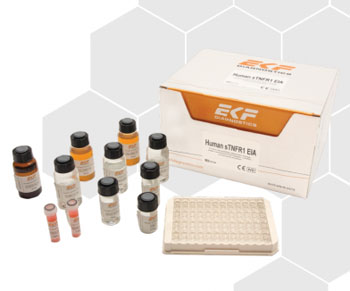ELISA Kit Used to Measure Predictive Marker for Diabetic Kidney Disease
By LabMedica International staff writers
Posted on 16 Dec 2015
A recently concluded study confirmed the usefulness of using the protein sTNFR1 (soluble tumor necrosis factor receptor 1) as a biomarker to predict progression of diabetic nephropathy (also referred to as diabetic kidney disease).Posted on 16 Dec 2015
Elevations in circulating soluble tumor necrosis factor receptors 1 and 2 (sTNFR1 and 2) have been reported in a wide variety of clinical conditions including cancer, congestive heart failure, rheumatoid arthritis, neurological diseases, and infection. In addition, a study conducted at the Joslin Diabetes Center (Boston, MA, USA) has shown that elevated circulating sTNFR1 levels were associated with the subsequent development of advanced diabetic kidney disease in Type I and Type II diabetic patients. These findings were based on TNFR1 data on 1335 patients followed over a four to six year period.

Image: The sTNFRr1 ELISA kit measures a predictive marker of chronic kidney disease (CKD) and end stage renal disease (ESRD) (Photo courtesy of EKF Diagnostics).
During the study levels of sTNFR1 in serum or plasma were measured with the EKF Diagnostics (Cardiff, United Kingdom) Human sTNFR1 EIA kit. This is a 4.5 hour solid phase quantitative sandwich enzyme immunoassay. The test procedure is based on the sequential addition of sample, polyclonal anti-human sTNFR1 antibody-enzyme conjugate, and colorimetric substrate to microplate wells coated with anti-human sTNFR1 monoclonal antibody. The resultant color intensity is proportional to the concentration of sTNFR1 in the test sample. Test results are determined from a standard curve calibrated against a highly-purified E. coli-expressed recombinant human sTNFR1 protein corresponding to the N-terminal ectodomain.
The Joslin Diabetes Center study was presented at "Kidney Week," the November 3–8, 2015, annual meeting of the American Society for Nephrology held in San Diego (CA, USA).
Related Links:
Joslin Diabetes Center
EKF Diagnostics













